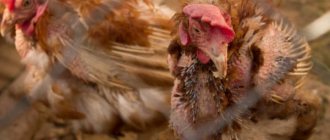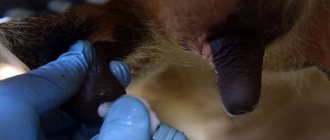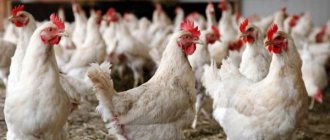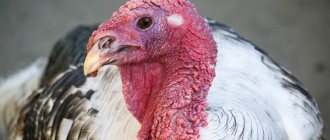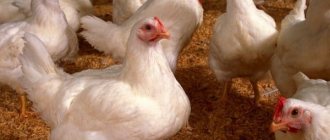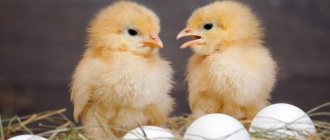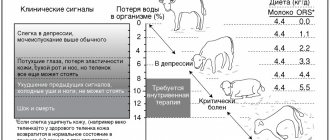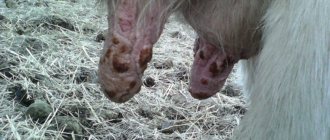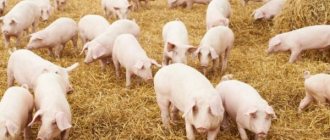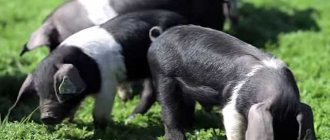Is bird flu dangerous for humans?
Avian influenza is one of the most common diseases in poultry.
Avian influenza is a dangerous subtype A disease caused by a virus. It affects not only poultry, but also humans (in 60% of cases, infected people die).
Often appears in winter and affects one bird population and then the rest. Ducks, geese and chickens are most susceptible to the disease.
This type of flu is especially dangerous because it constantly changes and prevents the human immune system from fighting it. Because the virus is virulent, it is easily transmitted through the air.
Human infection occurs through contact with sick birds, during carcass cutting, assembling and packaging eggs and meat. It also occurs when cleaning up bird droppings and touching contaminated objects.
Bird flu is especially dangerous because it constantly changes and prevents the human immune system from fighting it
Rarely, a person becomes infected after eating eggs or meat.
Transmission of influenza from one person to another has not yet been proven. However, influenza is mutational and often changes in nature, so there is a risk of infecting other people.
Impact on humans
One of the subspecies of bird flu is dangerous for humans. Therefore, you should not eat the meat of infected birds. If chickens are in quarantine, it is advisable for the poultry farmer to take antiviral drugs. After visiting the chicken coop, the farmer should wash his hands with soap. Before eating, it is advisable to wash your hands with soap and water, prepare dishes from fresh or well-heat-treated products, and drink boiled purified water.
After quarantine, you need to take precautions for several more months. The virus is very tenacious; it can remain in manure or water for a long time. At this time, there is a possibility of infection from wild waterfowl. In the past decade, 112 cases of human infection with the H5 avian influenza virus have been identified worldwide. 57 diseases resulted in death.
Symptoms of bird flu in humans are similar to those of other viral infections: headaches, muscle aches, attacks of nausea, vomiting.
In addition, diarrhea may develop and gums may bleed. After 5-7 days, breathing difficulties appear. Throughout the course of the disease, people develop a high temperature, a dry cough, and chills. To protect himself and preserve the livestock, the farmer must closely monitor the condition of the birds, and if the first symptoms appear, promptly contact veterinary services.
How is avian influenza transmitted in birds?
Influenza is transmitted between individuals by airborne droplets during dense planting. In sick birds, the digestive and respiratory organs are affected.
Young birds are most often infected. The reason is inadequate feeding, transportation and overcrowded stocking in poultry houses. Subsequently, the virus affects more mature healthy individuals.
In poultry houses, the virus spreads through:
- feces;
- feeder, tray or utensils of infected birds.
Be sure to read:
What to do if chickens peck each other until they bleed: causes, treatment of pecking
It is also transmitted through unwashed hands after contact with infected poultry, clothing and other things. Sources of disease: eggs, feathers, small pests, wild ducks.
The outbreak of the epidemic is most often observed in the autumn-winter period.
The first signs and symptoms in chickens
The first signs after infection appear the next day.
The reason for the mass death of chickens is low immunity
In acute poultry form:
- sharply reduce egg production;
- refuse to take food (even to the point of anorexia);
- secrete thick mucus that clogs the respiratory organs and nasopharynx;
- wheeze heavily and breathe intermittently;
- have a hot body (their body temperature reaches 44 degrees);
- excrete brown and greenish droppings;
- experience neurosis and convulsions, their neck and wings become bent;
- suffer from incoordination of movements, stagger, fall;
- feel very thirsty.
In the last stage, pulmonary edema and damage to the nervous system are observed, a general deterioration in health and death.
Characteristics of the disease
There are 15 types of flu. The most dangerous viruses are H5N1 and H7N7. They affect the bird’s body after a few days and in one hundred percent cases the individual dies.
The remaining types are presented in a light form. They have no obvious symptoms. The bird recovers on its own. But there is a deterioration in egg production and the condition of feathers.
The severe form has pronounced symptoms, which are observed during the first day. The duration of the disease is from 3 to 5 days.
Chickens are susceptible to 15 types of bird flu
Bird flu can be acute, subacute and chronic. The second and third types of influenza are treated within a month and are cured in 85% of cases.
The probability of death of the entire livestock is low. The acute form develops on the first day. The probability of death of the livestock is 99%.
Influenza is transmitted by wild birds (pigeons, sparrows, magpies and ravens), rodents (mice, rats) and cats. It occurs like an epidemic.
The time it takes for the disease to spread is from 22-32 hours to several days.
An infected bird has ruffled feathers and a blue comb and wattles. She often stands with her head tilted down, her eyelids swell, and her eyes are invisible due to swelling. The nose becomes covered with pus due to increased pressure in the vessels and increased blood in the capillaries.
Be sure to read:
How to get rid of chicken lice using folk and chemical means
As the flu develops, the sick individual suffers from catarrhal and hemorrhagic diseases of the mucous system and lungs, subcutaneous edema in the nasopharynx, chest and legs.
At the time of death, hemorrhage occurs in the chest, intestinal tract, spleen, liver, kidneys and heart.
Danger of the disease and routes of transmission of the disease
The virus is transmitted by wild birds, mainly ducks. They have increased immunity against the disease, so they themselves do not get sick. Rodents, cats, and parrots can also be sources of the virus. The pathogen is transmitted through food, feeders, drinking bowls, carcass and egg trays. Not only living birds are contagious, but also dead ones and their eggs.
All types of poultry are susceptible to influenza. It was first discovered in birds in China. In Russia, the first case was registered in 2006. People can get sick from bird flu. The first infection was registered in 1997 in China. Of the 18 sick people, 6 people died. In 2013, there were 453 cases and 175 deaths from the H7N9 virus subtype in China. The last death recorded in Canada was in 2014.
Stages of chicken flu disease
Once in the bird's lungs, the viral infection spreads through the mucous membrane. After four hours, the virus enters the bloodstream and destroys red blood cells, causing damage to the entire body and death.
The avian influenza virus attacks the nervous system and leads to pulmonary edema
Severe bird flu has 4 stages:
- Infection with the reproduction and accumulation of the virus in the body.
- Spread of the virus to red blood cells.
- The body produces antibodies to fight the virus.
- Formation of antibodies , the body's fight against the progressing virus and destruction of blood cells.
As a result, the bird’s body cannot cope with the disease and dies.
H5N1 influenza subtype
Bird flu subtype H5N1, the most insidious and dangerous, has the following symptoms:
- damage occurs to the bird's vascular system;
- sick chickens suffer from internal hemorrhages;
- blood circulation is disrupted;
- On the first day, cerebral edema occurs.
The suspected diagnosis is confirmed by a number of studies. Avian influenza subtype H5N1 exists if:
- the avian influenza virus was discovered and identified;
- all subtypes of avian influenza have been identified;
- the presence of RNA (ribonucleic acid) has been proven.
There are antibodies to hemagglutinins, characteristic of the H5 subtype; antibodies are not associated with vaccination.
It is possible for several varieties of the virus to circulate simultaneously. The causes of avian influenza infection on farms are:
- the infection could have entered with feed;
- if infected equipment and inventory were used;
- if there was no disinfection of meat and egg chicken containers. It is carried out using bleach, hydrochloric acid, sodium hydroxide or phenol. They are able to quickly inactivate the virus.
H5N1 is the most dangerous variant of the virus
How to treat and can it be cured at all?
Important! It is currently impossible to cure acute influenza. All sick chickens and potentially infected individuals in contact with them are destroyed.
The poultry house is quarantined. All items located in the chicken coop or near sick birds are destroyed. Meat, eggs, feathers and other products are disposed of.
With a mild form of the disease, birds with good immunity cope with the disease on their own.
H5N1 is the most dangerous variant of the virus
To stimulate the development of immunity and ensure its active work in the fight against the virus, birds are given medications (antibiotics and vitamins). When quarantine is established in the region, birds are also given antibiotics and vitamins.
What to do with a sick bird
If pronounced symptoms of the disease appear, veterinarians in the region are informed. Once the diagnosis is confirmed, the diseased birds are destroyed.
The poultry house is quarantined. Sick birds are killed and sent to the laboratory for examination.
Important! Birds located near infected individuals are also exterminated to prevent the spread of the infectious disease. All products of infected individuals are disposed of.
Forecast and prevention of bird flu
A vaccine against the virus is being actively developed. Research is being conducted in many Russian, American and Chinese laboratories.
Be sure to read:
How to recognize and treat coccidiosis in chickens and chickens
Today the forecast for bird flu is disappointing. When infected with an acute form of the disease, the livestock dies in 99% of cases. In addition, there is a risk of influenza transmission to humans.
To prevent an outbreak of infection, the following measures are taken:
- Repellers, traps and other devices are installed around the poultry house area to help repel wild animals, small rodents and other animals. They can be potential carriers of diseases.
- The poultry house is disinfected daily using chemicals, for example, soda with chloramine.
- Bird perches and nests are treated with slaked lime.
- Breeders take antiviral medications for preventive purposes.
Attention! People with heart disease and lung disease should completely avoid caring for and contact with birds.
Prevention measures:
- Keep children away from game or infected birds.
- Do not handle dead or sick chickens.
- If you find the remains of a dead bird, do not approach it yourself and do not allow anyone to approach the place of death. If possible, the corpse should be destroyed by fire, protecting the mouth and nose with protective equipment, and the hands with gloves. At the end of work, you need to wash your hands, face and change clothes.
- You should not eat raw foods, including undercooked meat and undercooked eggs.
- If you notice symptoms of the virus in your house, call your veterinarian.
- If you suspect influenza infection after being around birds, seek medical attention.
Disease prevention
To date, there is no vaccine against bird flu, although scientists around the world are working on its creation. To avoid infection, doctors recommend following simple preventive measures:
- The very first preventive procedure is vaccination against “classical” types of influenza. It can be performed at any clinic in the city. The vaccination is aimed at strengthening the immune system. The vaccine contains active components that stimulate the production of protective antibodies against regular influenza, and its virus has several antigens similar to the H5N1 virus;
- Poultry meat and eggs may only be purchased in known places where they are inspected by the sanitary service;
- If you are engaged in agricultural activities and keep birds, then you must monitor their health. The unexpected death of several individuals may indicate infection. Under no circumstances should you touch them without gloves. After destroying sick individuals, hands and clothes should be treated;
- If there has been contact with a bird and a person has any signs of bird flu, then you should immediately contact a medical facility;
- During seasonal influenza epidemics, the population should spend more time in the fresh air, get proper rest, ventilate the living areas of the apartment and carry out wet cleaning.
